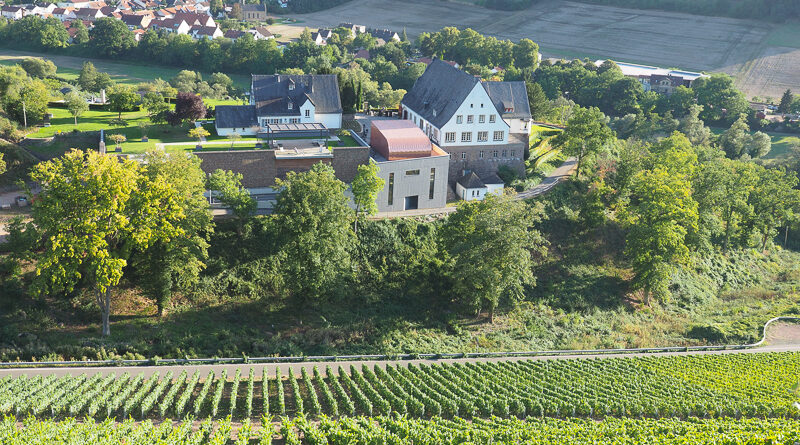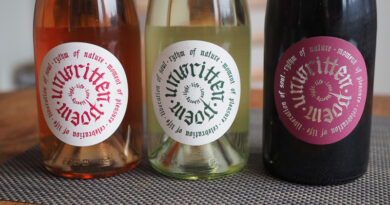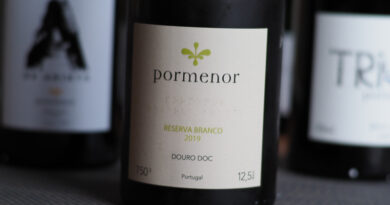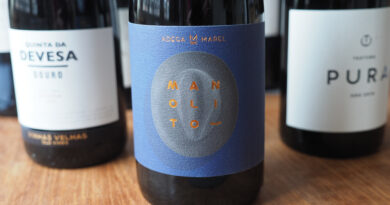Gut Hermannsberg: visiting this Nahe winery, one of Germany’s top estates
Website: https://gut-hermannsberg.de/en
One of my few vineyard visits of 2020 was to Gut Hermannsberg, in Germany’s Nahe region. It was my first time here, and it’s one of the most impressive wine estates in the country. The modern era here begins in 2009, when it was purchased by Jens Riedel and Christine Dinse. Prior to this, it was called Gutsverwaltung Niederhausen-Schlossböckelhim. The Riedel’s bought the estate from a Palatine family, but for the first 100 years it had been in state ownership.
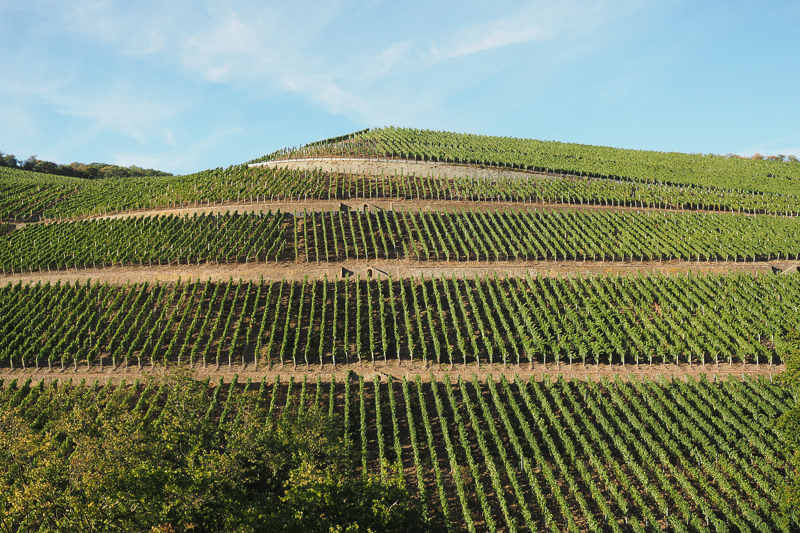
The Nahe region is currently turning out some of Germany’s very best Rieslings. It’s also one of the few regions in the world that has benefited from warming trends brought by climate chaos. From 1961-1990 this part of the world had an average growing season temperature of 14.5 C, says Stuart Pigott in his monograph on the Gut Hermannsberg estate. The hot 1976 vintage saw an average of 15.7 C. In 2014 it was 16.1, in 2015-17 15.9 and then in 2018 it was 17.8 – this was Germany’s hottest ever vintage.
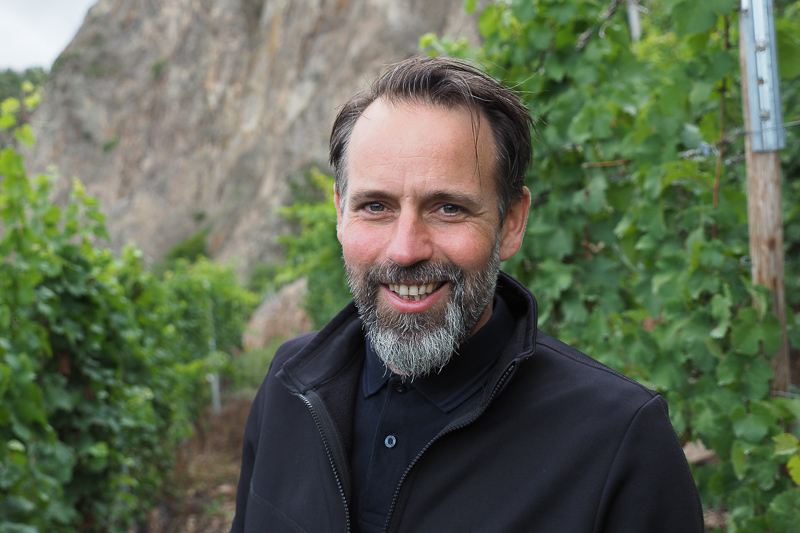
Karsten Peter has been winemaker here since the start of the new regime: he began at the start of September 2009. Winemaking is traditional and low intervention. ‘We do mainly nothing,’ says Peter, ‘and use the things coming out of the vineyard.’ The cellar has a lot of small stainless steel tanks as well as 600 litre wooden casks called Halbstück.
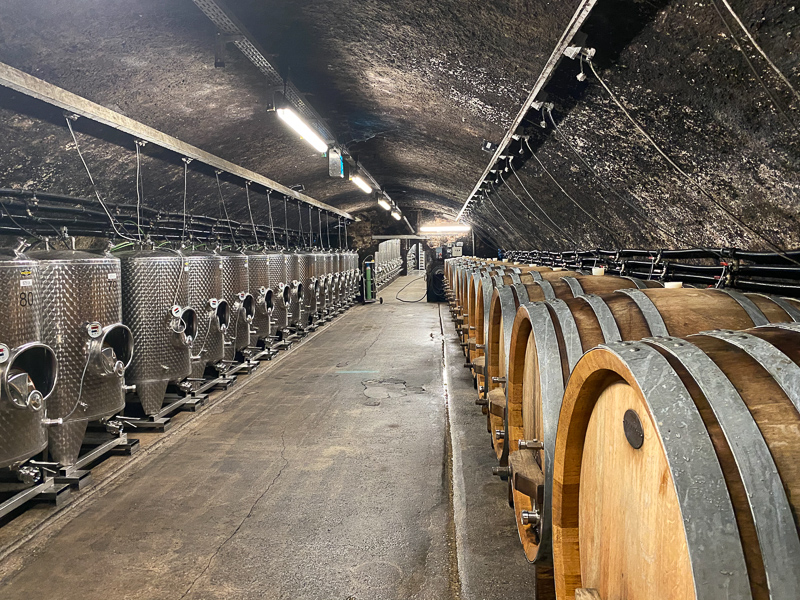
Gut Hermannsberg has seven different vineyard sites, three of which are right next to the winery. This makes it feel like a proper wine estate, and this is rare for a country in which most vineyard holdings are fragmented and dispersed over a wide geographic area. The reason for this is the 100 years of state ownership, which prevented the vineyard holdings from being broken up by inheritance laws.
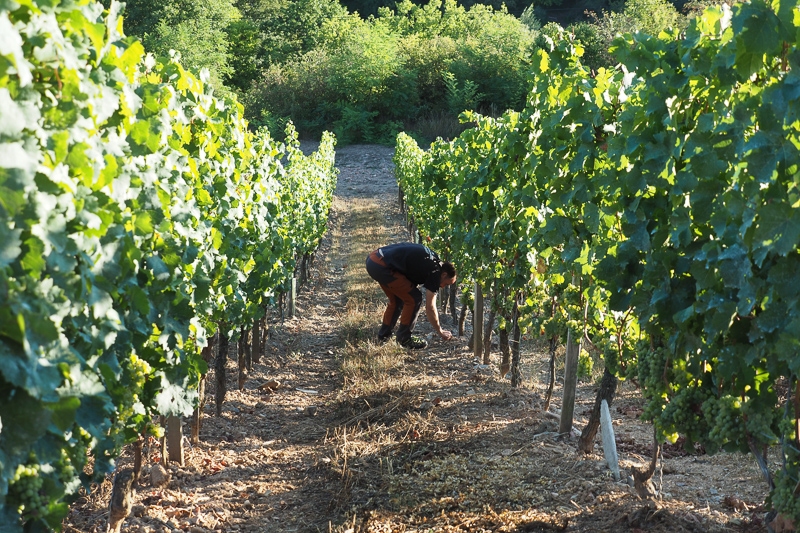
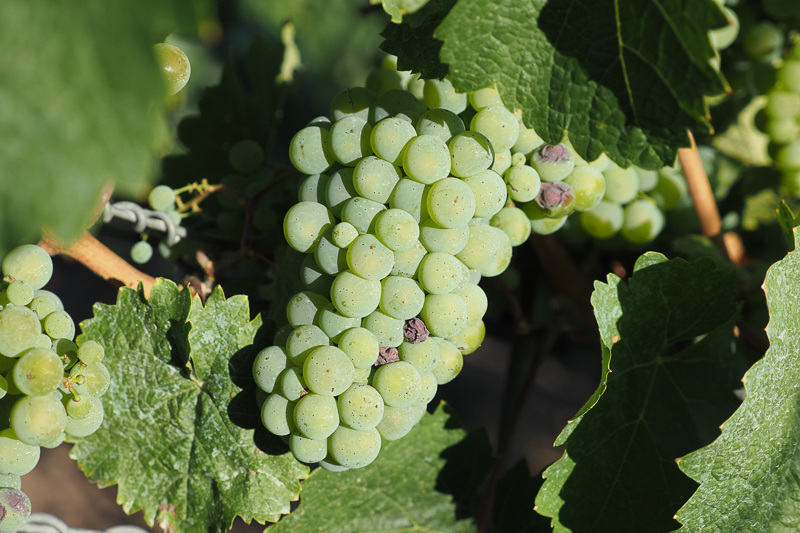
There’s the steeply sloped Hermannsberg monopole running down from the drive leading to the winery, then facing the winery the Kupfergrube (they own 12 of the 15 hectares of this vineyard: they traded their bit of Hermannshöhle with Donnhof for his bit of Kupfergrube), and at the end of the valley facing the winery there’s the Steinberg (this is attached to the neighbouring village of Niederhausen. These vineyards are separated by just 100 metres, but have three different soil types – slate, volcanic soils and porphyry, respectively.
—
A short video of the vineyards and winery:
—
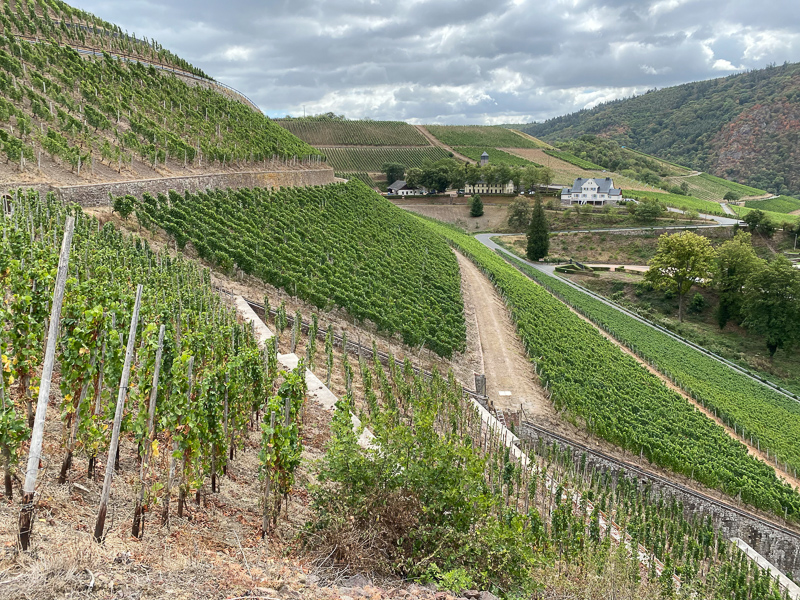
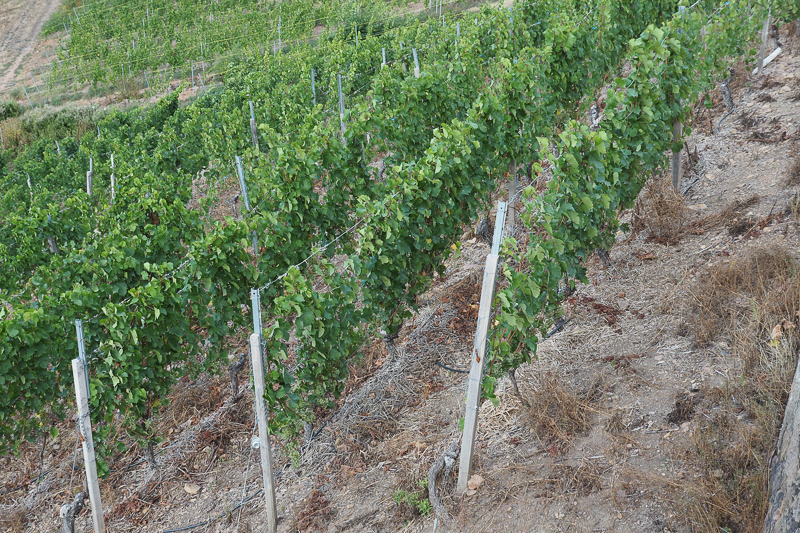
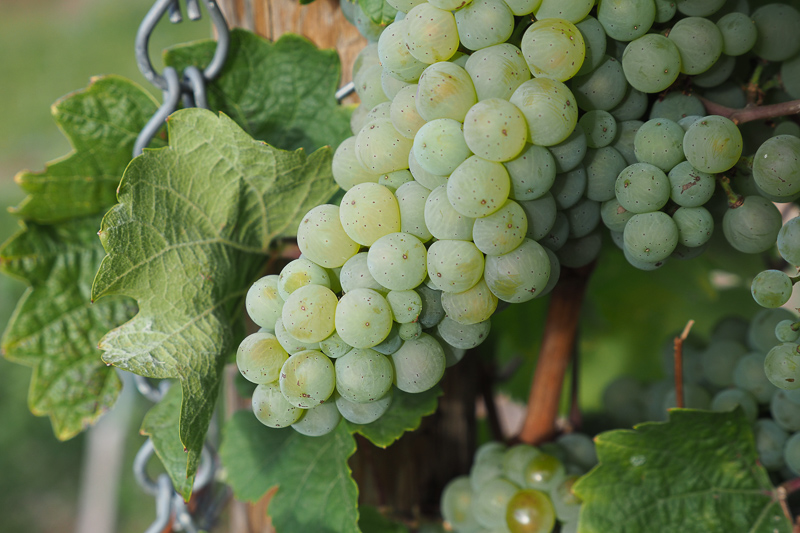
Then there’s a really interesting vineyard called Rossel, which is a monopole. It’s a ‘gewann’ which is a German equivalent to a lieu dit in France. Until recently it has been illegal to use a gewann on the label. The older vines from here go into the Steinterrassen wine, while the younger vines go into the 7 Terroirs.
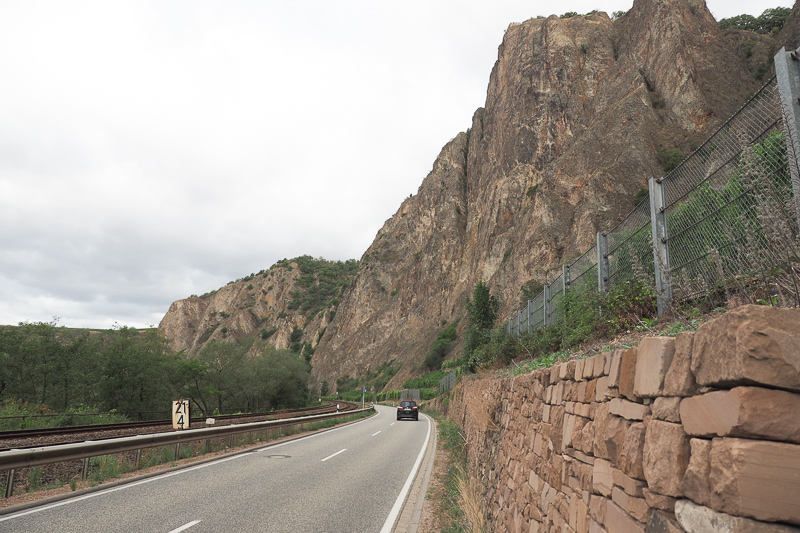
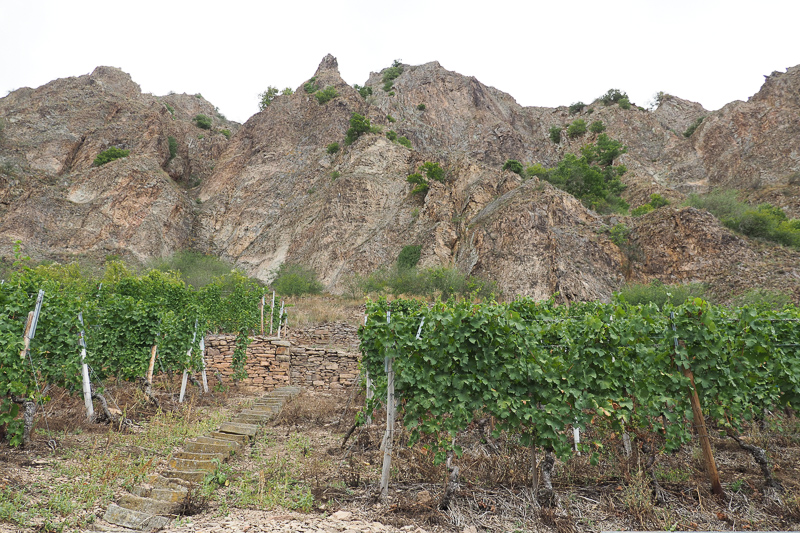
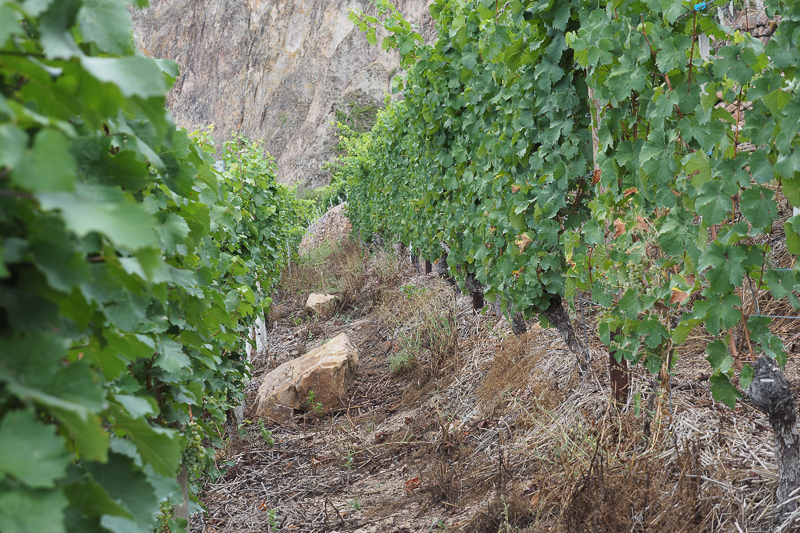
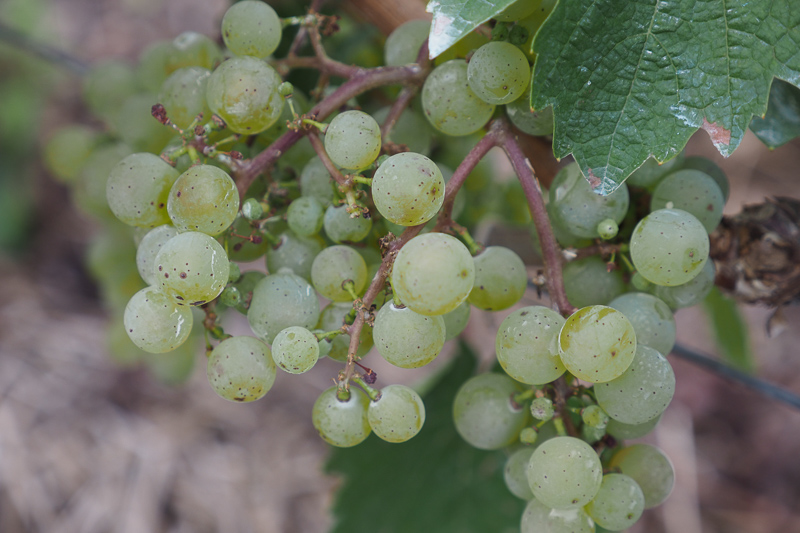
One of the most spectacular vineyards is called Bastei in Traisen. This is at the base of a 180 m cliff called the Rotenfelz. Two or three times a year people jump off this because there’s a very high free fall and the outcome is pretty certain. The soils are riolite/quartz/porphyry, and in some of the vine rows you can find big lumps of rock that have fallen from the face of the cliff.
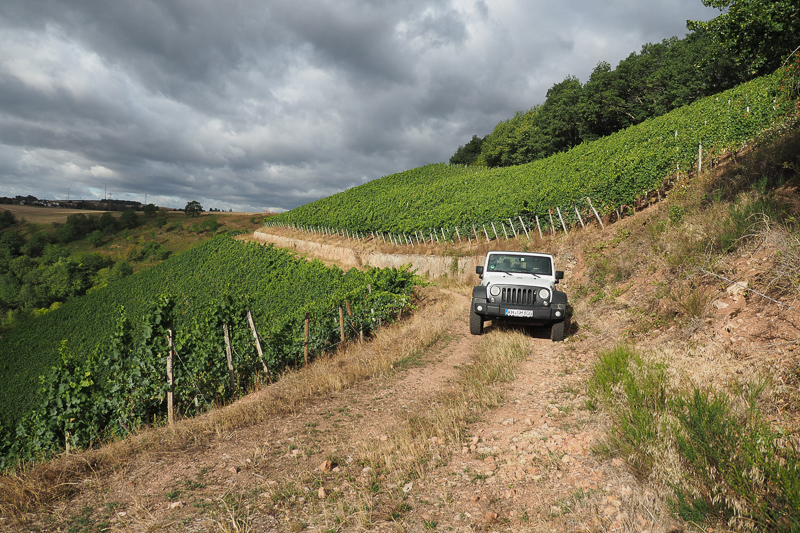
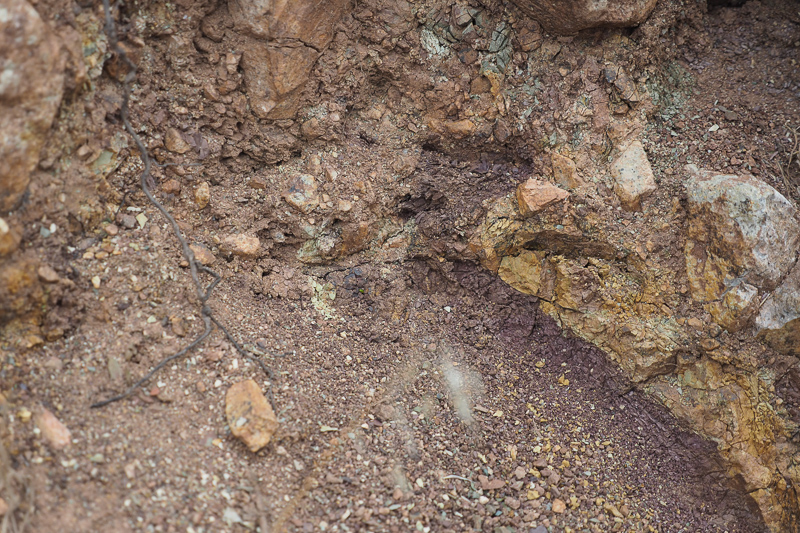
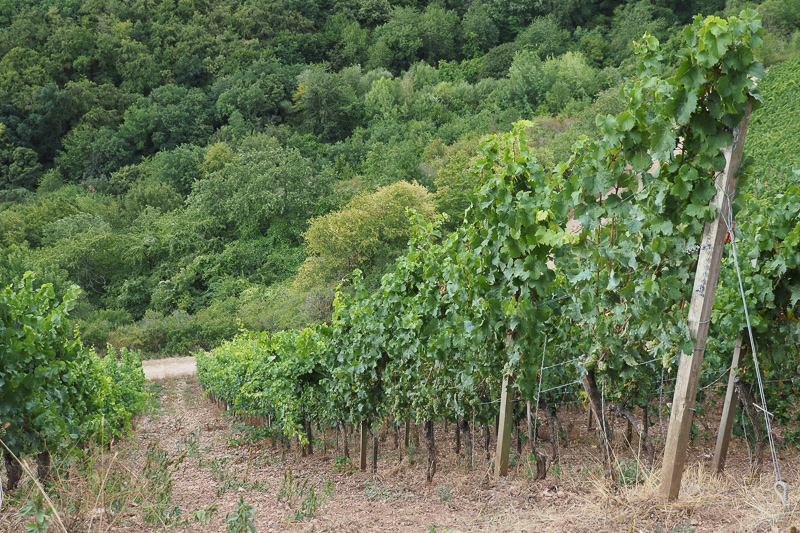
And there’s also the Rotenberg vineyard in Altenbamberg, which is volcanic rhiolyte. With the planting of an extra hectare here, Gut Hermannsberg now have 4 hectares on this steeply sloped site.
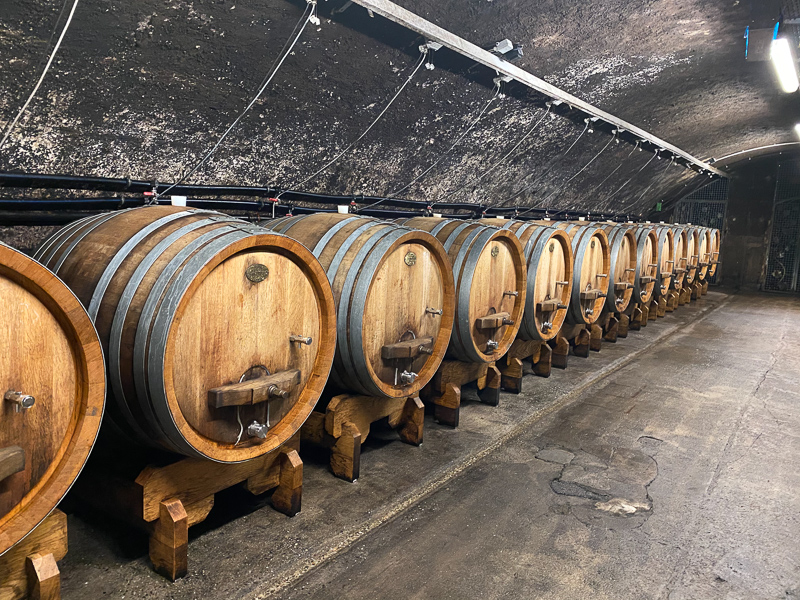
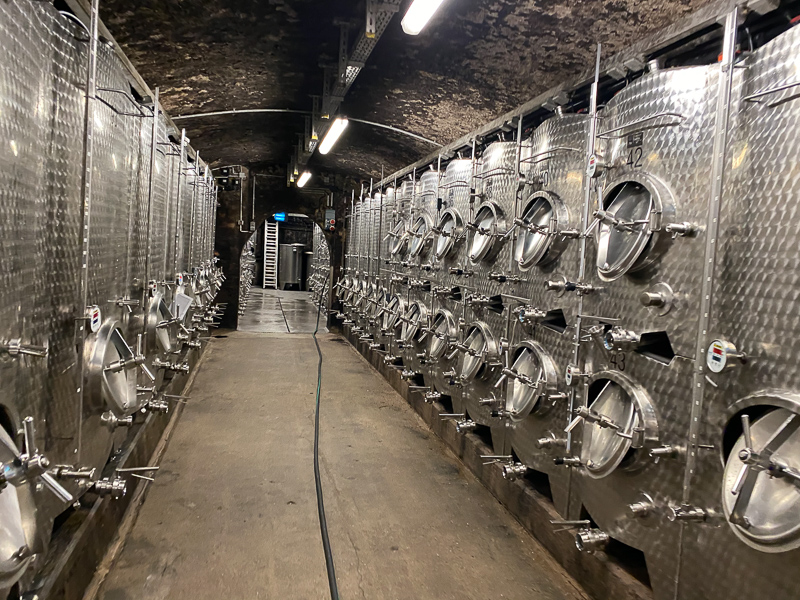
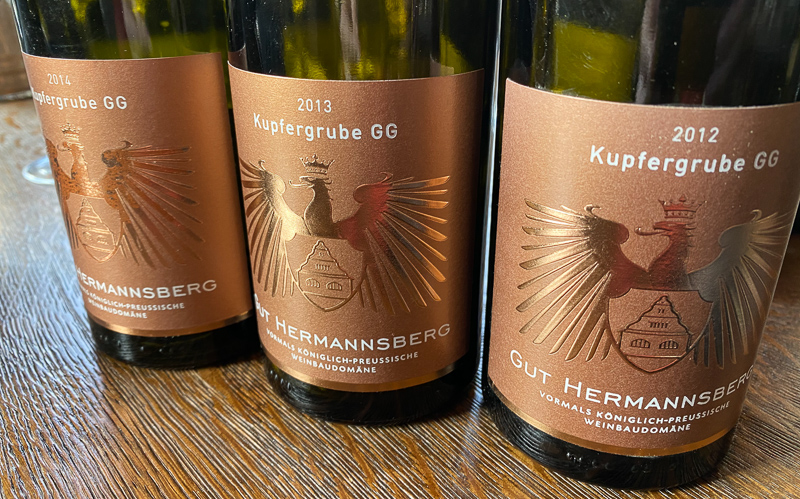
THE WINES
Gut Hermannsberg Seven Terroirs Riesling 2019 Nahe, Germany
Pure linear and crystalline. Focused with lovely precision to the limey fruit. Fine with good acidity: very fine and astonishing value at €12. 93/100
Gut Hermannsberg Vom Vulkan Riesling 2019 Nahe, Germany
From volcanic soils. This is linear, bright and limey with nice crisp, focused fruit. Very fresh and nuanced with a linear quality to the fruit. Such precision and purity. 93/100
Gut Hermannsberg Hermannsberg GG Riesling 2016 Nahe, Germany
The last really classic vintage here: 17, 18 and 19 were all warmer years. Pristine and bright with lovely citrus fruit. Has some nice fine spicy notes with fine herbs. This is very fine with a lacy structure. Elegant. 94/100
Gut Hermannsberg Hermannsberg GG Riesling 2018 Nahe, German
Lovely freshness here. Very bright and lemony with nice focus. Considering the warm vintage, this is really expressive with a nice juicy lemony focus. Very fine indeed with nice mandarin notes on the finish. 94/100
Gut Hermannsberg Bastei GG Riesling 2015 Nahe, Germany
This is concentrated and dense with some spice and pear and apple. Textured with some breadth and lovely intensity. Fresh and fine-grained on the finish. 94/100
Gut Hermannsberg Bastei GG Riesling 2016 Nahe, Germany
From this extreme terroir, this is very complex, spicy and mineral, showing astonishing precision and purity. Linear with a slight salinity, and amazing minerality. 96/100
Gut Hermannsberg Steinterassen Riesling 2016 Nahe, Germany
Strongly mineral and quite lean with some lovely apricot and mandarin richness. Drinking beautifully now with precision and focus. Lovely intensity, and a steal for €20. 93/100
Gut Hermannsberg Rotenberg GG Riesling 2019 Nahe, Germany
Vibrant, lively and crystalline with intense limey fruit. This is concentrated with high acidity. Very refined, concentrated and intense: thrilling stuff. 94/100
Gut Hermannsberg Blanc de Blancs 2015 Nahe, Germany
Mostly Pinot Blanc with some Chardonnay. Crisp, bright, linear and taut with good acidity. Fruit focused and linear, showing lovely precision. This is really lovely. 92/100
Gut Hermannsberg Felsenberg Riesling GG 2019 Nahe, Germany
This is slightly honeyed on the nose with lovely fresh lemony fruit, as well as some pear and spice notes. Pretty, but also has precision, and a touch of apricot, too. 94/100
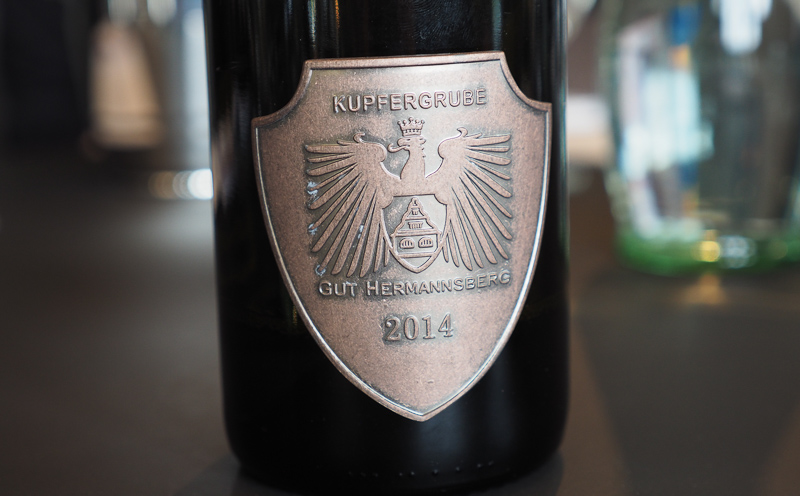
Gut Hermannsberg Schlossböckelheimer Kupfergrube Riesing Sekt Extra Brut 2013 Nahe, Germany
Full golden colour. Powerful, honeyed and spicy with nice density and some nutty notes. Great concentration with toast and spice. Quite intense with nice depth. Really appealing in a powerful style, finishing with some marmalade notes. 94/100
Gut Hermannsberg Schlossböckelheimer Kupfergrube Riesing Sekt Extra Brut 2014 Nahe, Germany
11.5% alcohol. This was disgorged June 2020, after 62 months on lees. Has 15% 2013 as a reserve wine. Tight and linear with a slight green edge to the crystalline citrus fruit. There’s a lovely precision to this wine with some bright lemony notes. Very fine with subtle toast hints, with a mineral precision. Lovely wine with richness but also nice tension. 94/100
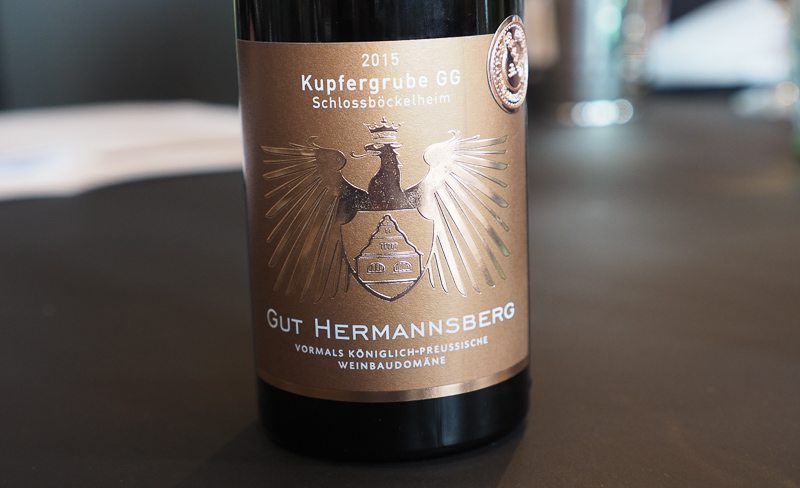
Gut Hermannsberg Schlossböckelheimer Kupfergrube Riesling GG 2009 Nahe, Germany
13.5% alcohol, harvested 24 October. 24 hl/ha yield. 6.8 g/l residual sugar. A complicated year. Karsten Peter started here in September so wasn’t involved in the vineyards. It was a complicated vineyard that required a lot of selection. Rich and quite intense with bold citrus, pear and melon fruit. There’s some sweetness here, a touch of toffee, and a bit of honey, as well as some green hints. Nice sweet fruit here with good intensity, showing some development. 93/100
Gut Hermannsberg Schlossböckelheimer Kupfergrube Riesling GG 2010 Nahe, Germany
Started picking Riesling 21 October and finished at the end of November: the coolest vintage in memory. This was hard to sell at the beginning because of the bad press, but five years later with bottle age the demand became strong. 13% alcohol, acid 8.2 g/l. Golden colour. This is rich but also has freshness with some toasty notes, some spiciness and lovely pear, melon and honey notes, as well as good supporting acidity. This wine shows real harmony and focus with a fine spiciness. Such a lovely wine. 94/100
Gut Hermannsberg Schlossböckelheimer Kupfergrube Riesling GG 2011 Nahe, Germany
13.5% alcohol, 0.8 g/l residual sugar. Yield 30 hl/ha. There’s a fresh lime oil edge to the nose. The palate is very bright and linear with some mineral notes, keen acidity, a hint of green and a bit of structure. There is some mint on the finish. Very fresh and supple and quite distinctive. Still youthful and taut with great precision. Mint and lime. 94/100
Gut Hermannsberg Schlossböckelheimer Kupfergrube Riesling GG 2012 Nahe, Germany
12.5% alcohol. 30 hl/ha. Sweetly fruited and ripe with appealing melon, peach and apricot notes, as well as some citrus. It’s so likeable and fruity: lovely intensity and friendliness, with nice fruit character. Maybe a little soft and not showing the character of the site, but lovely. 93/100
Gut Hermannsberg Schlossböckelheimer Kupfergrube Riesling GG 2013 Nahe, Germany
13% alcohol, dry, 8 g/l acidity. 30 hl/ha. Full yellow colour. This is a wine of contrasts: it’s smoky, mineral and fresh, with keen acidity and ripe yellow fruits, as well as a bit of lime. There’s also some structure here. Has a grippy edge to the fruit. Mineral and finely spiced with some mint and herb notes. This is very savoury and structured with lots of personality. 95/100
Gut Hermannsberg Schlossböckelheimer Kupfergrube Riesling GG 2014 Nahe, Germany
30 hl/ha. This is the first year they did two years on yeast lees, without much experience, so this was reduced in its youth. Powerful and intense, with some matchstick reduction and some lovely spiciness. This is very intense with some sweet pear and melon notes, with lovely depth and focus. Lovely depth of flavour with a really nice spiciness. This is so expressive with the first stages of development, but also youthful freshness. 95/100
Gut Hermannsberg Schlossböckelheimer Kupfergrube Riesling GG 2015 Nahe, Germany
30 hl/ha. 4 g/l residual sugar, 8.4 g/l acidity. 12.5% alcohol. A very dry vintage. Intense, toasty, spicy and mineral on the nose with ripe peach and pear fruit. Massive concentration on the palate with crystalline citrus, pear, spice and honey, with amazing intensity, showing good acidity. This year there was a massive diurnal swing towards harvest with cold nights and hot days. After five years of ageing the different components have started to merge together, says winemaker Karsten Peter, and it is more and more just one wine. This is vivid and intense and really complex, finishing with an exotic flourish of apricot and pink grapefruit. 96/100
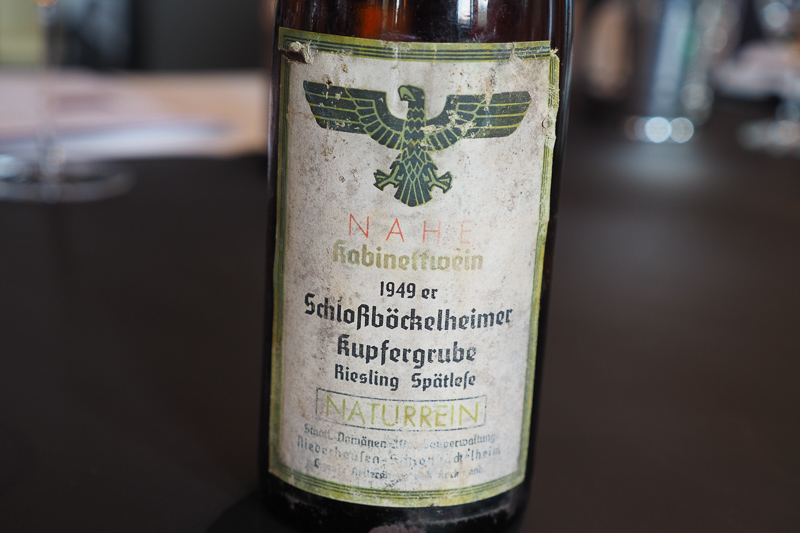
Staatlichen Weinbaudomänen Niederhausen-Schslossböckelheim Schlossböckelheimer Kupfergrube Riesling Spätlese 1949 Nahe, Germany
Deep gold colour. Fresh nose of mint and honey with some fine herbs. The palate is really fresh with good acidity and nice tension: there’s some sweetness here, but it isn’t really apparent, and the wine seems dry. Such astonishing freshness with beautiful focus and harmony: tasted blind I’d be miles off here, such is the freshness and purity. Linear and astonishingly pure, this is a real treat. Not a botrytis style, but showing lovely purity. 97/100
Staatlichen Weinbaudomänen Niederhausen-Schslossböckelheim Schlossböckelheimer Kupfergrube Riesling Kabinett 1989 Nahe Germany
9.5% alcohol. Slightly mushroomy nose. The palate has bright lime and lemon fruit with some honeyed notes. Brisk acidity with nice focus. Limey and bright with nice crystalline notes. Still very fresh. 93/100
Find these wines with wine-searcher.com

